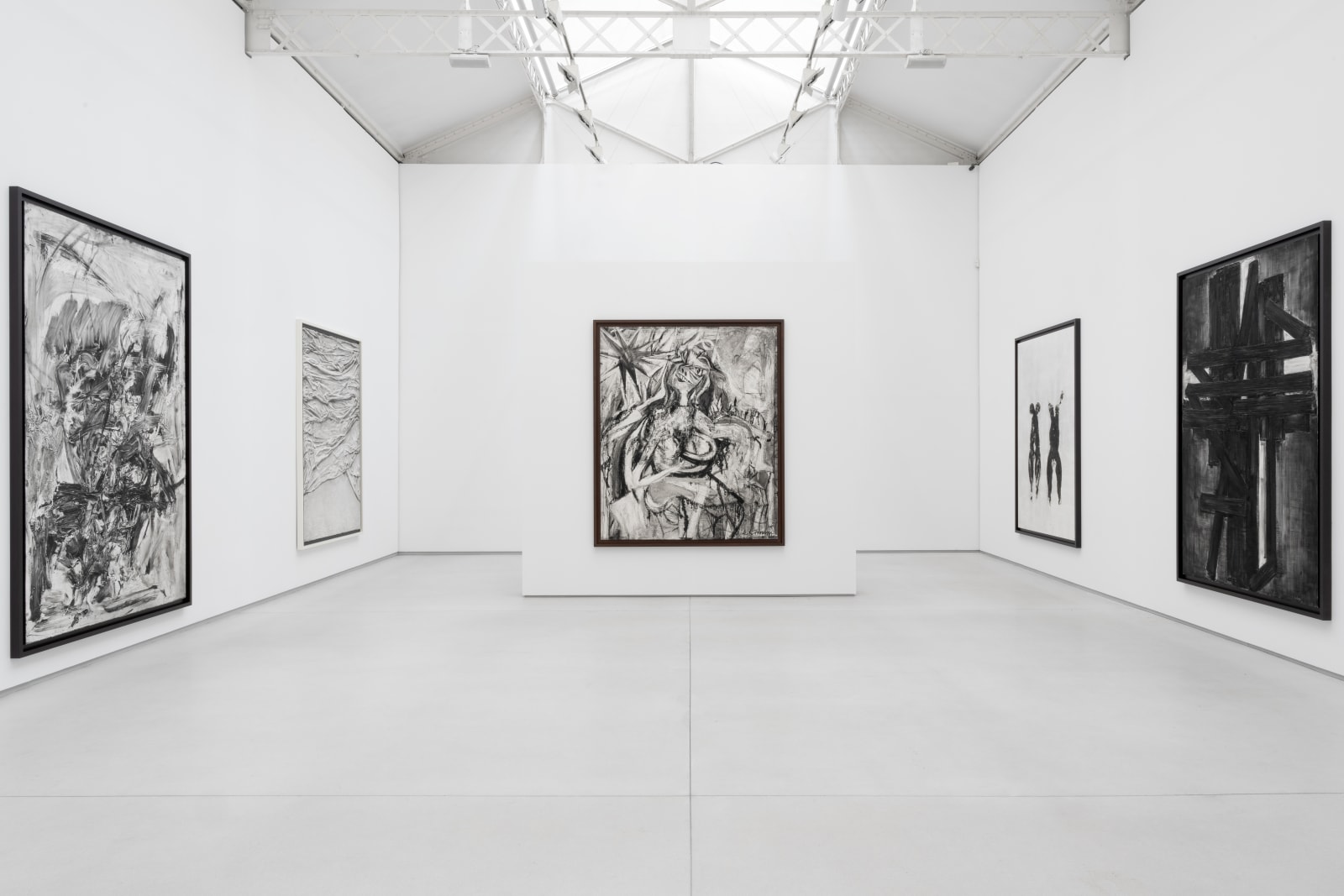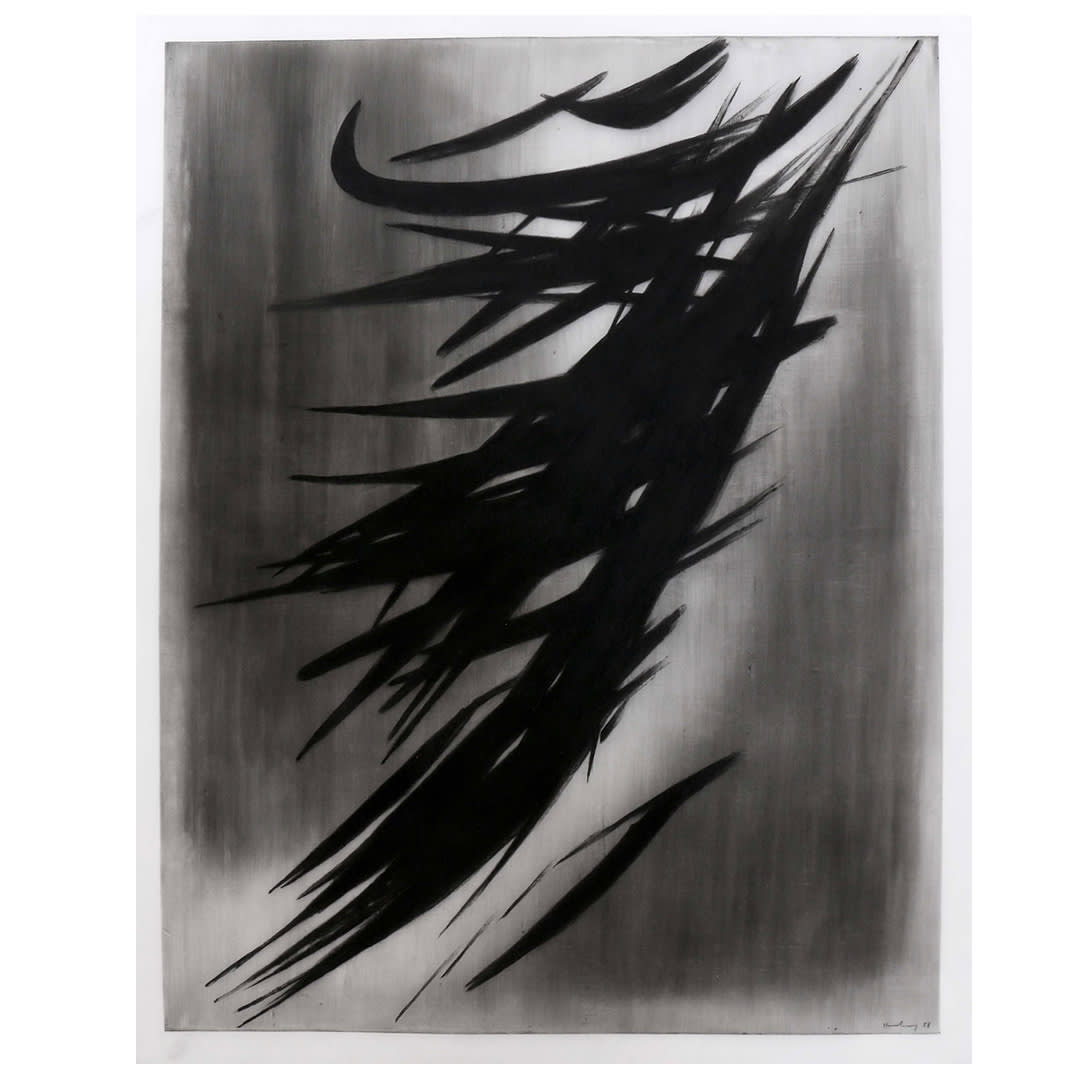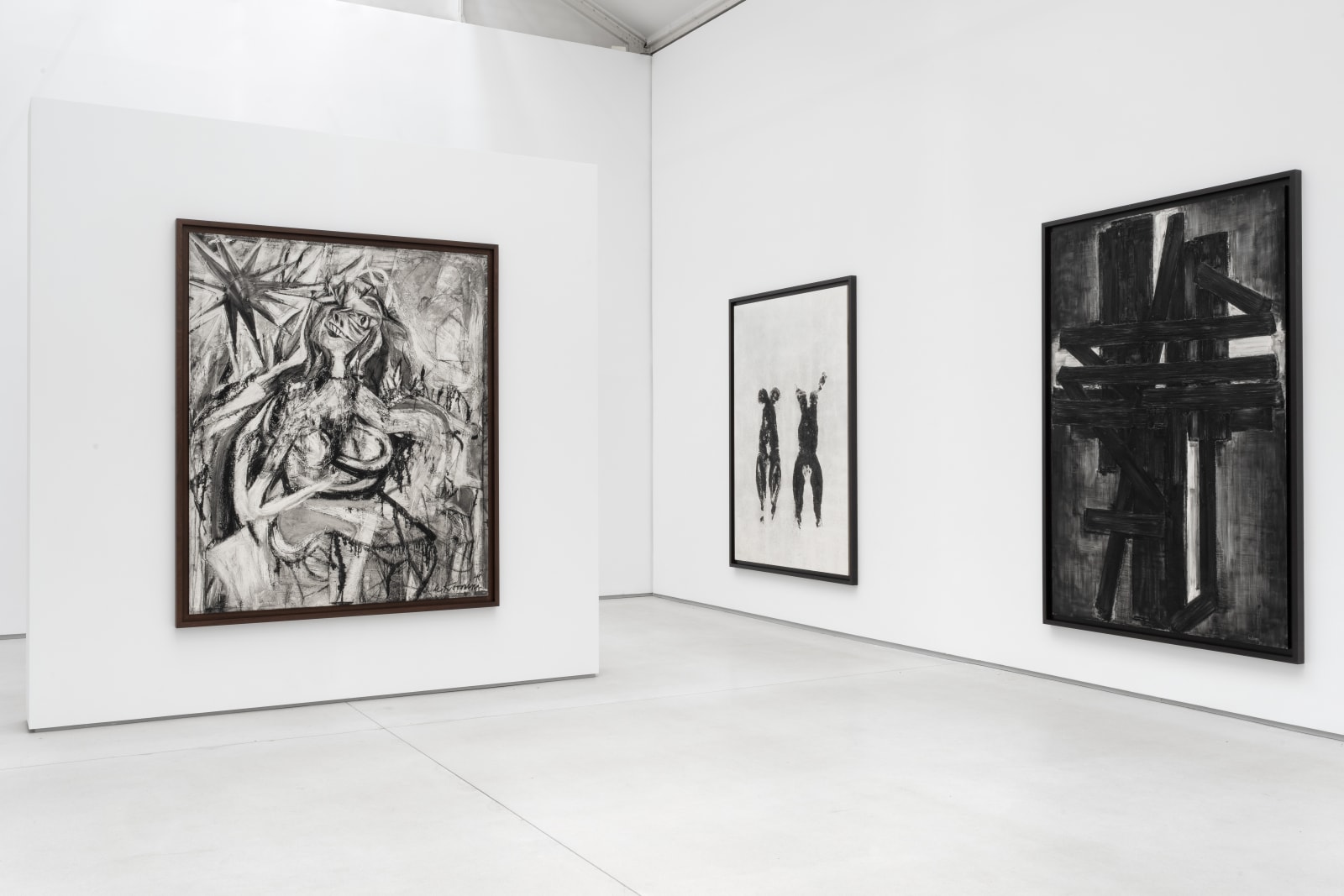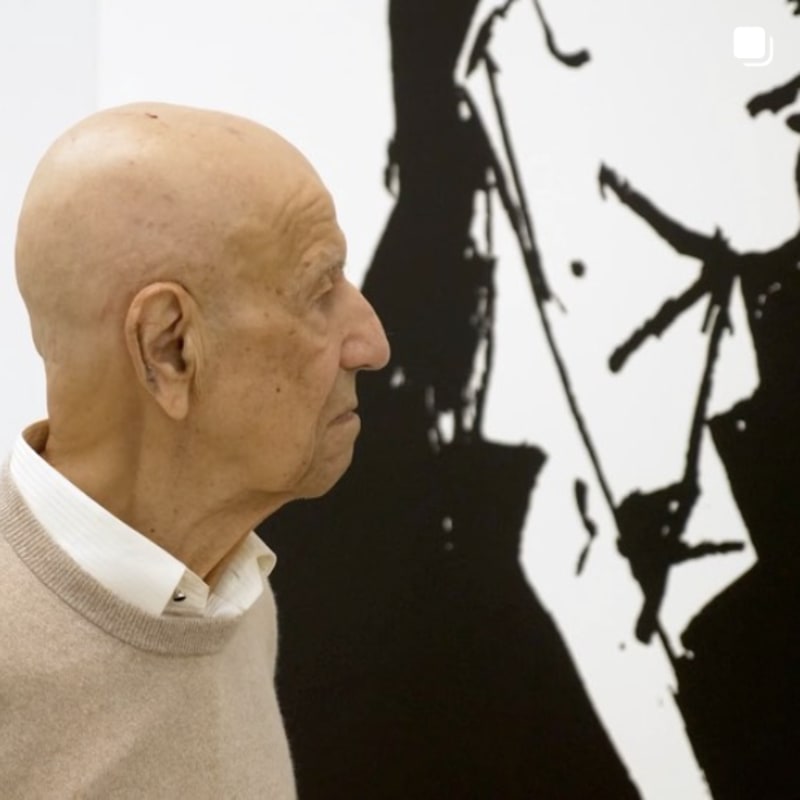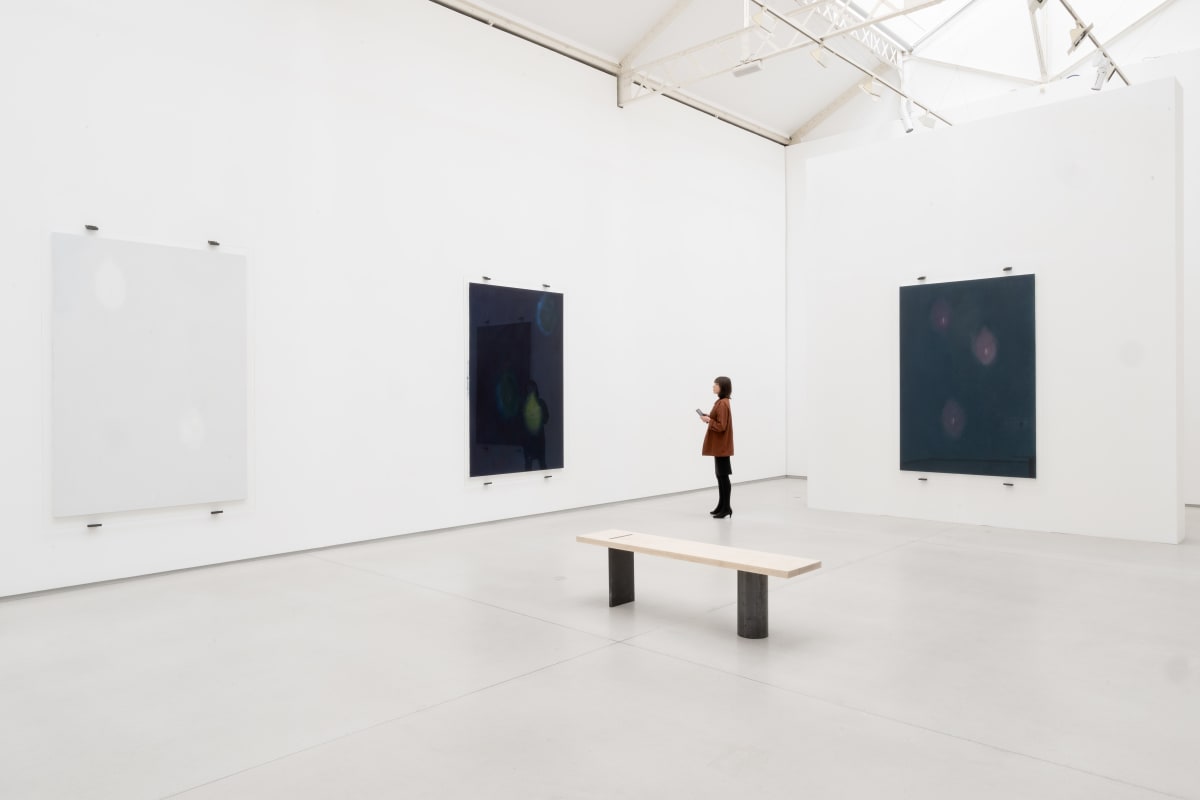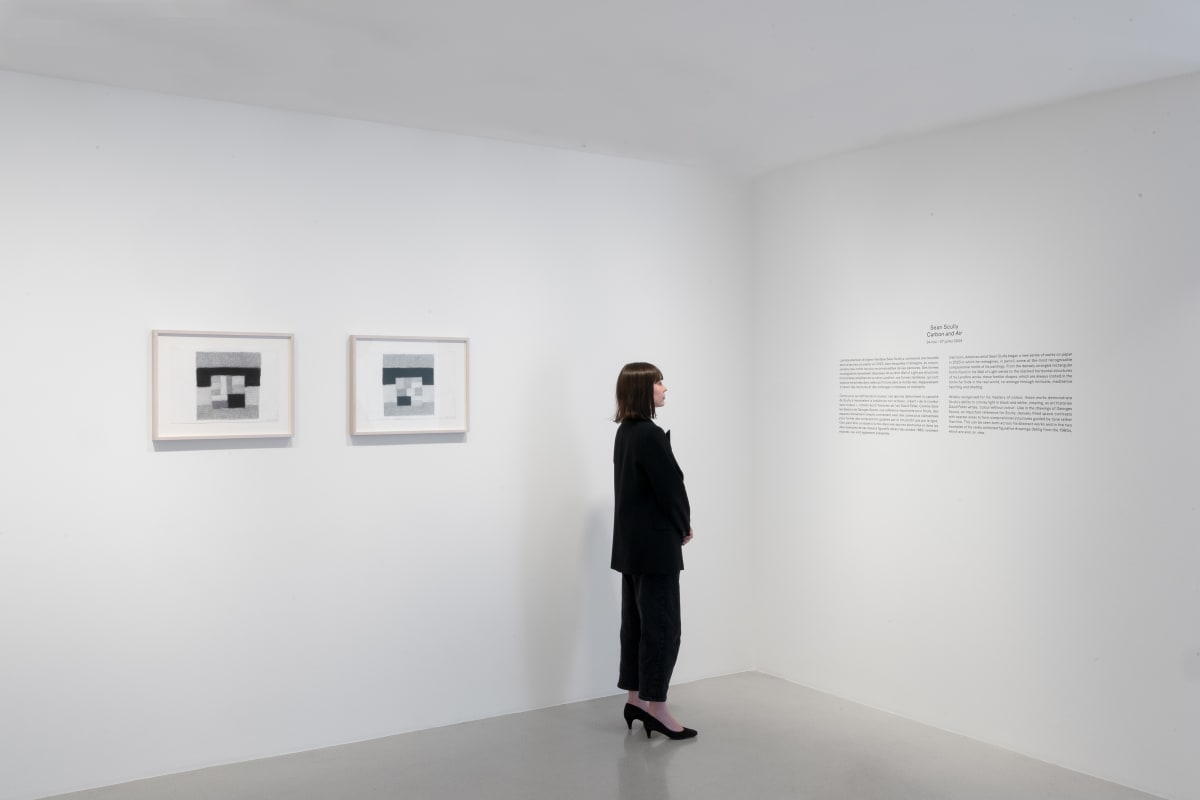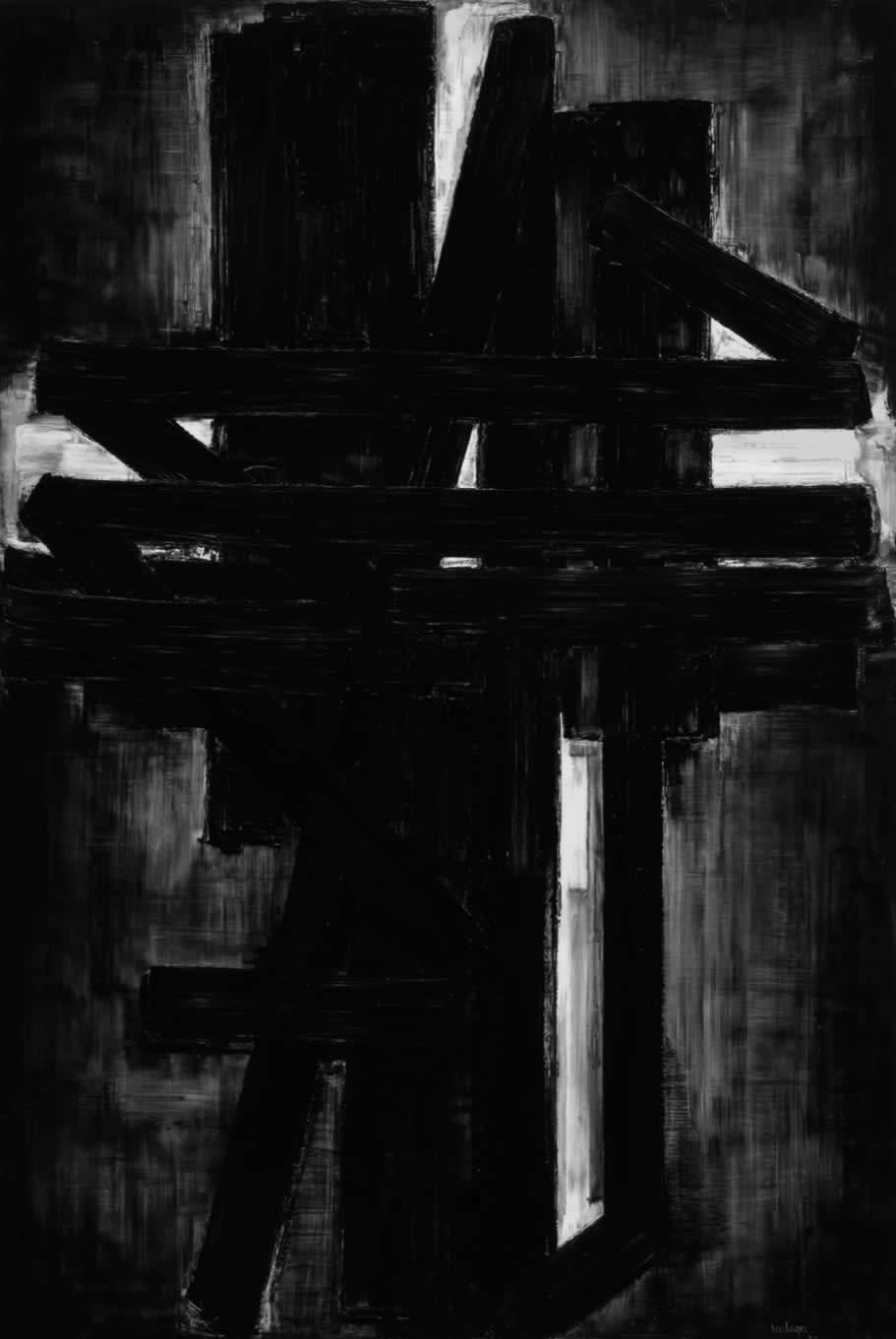
Longo’s drawing of Pierre Soulages’ painting lies at the heart of the historical construction laid out in the exhibition. Stylistically, the original work bridges the gap between European Art Informel and American Action Painting. By carefully recreating every brushstroke and groove of black paint, Longo rediscovers through Soulages’ hand the potential of his own monochrome medium.
Untitled (After Soulages; Painting, 195 x 130 cm, May 1953; 1953), 2022Charcoal on mounted paper
243.8 x 161.8 cm (95.98 x 63.7 in)
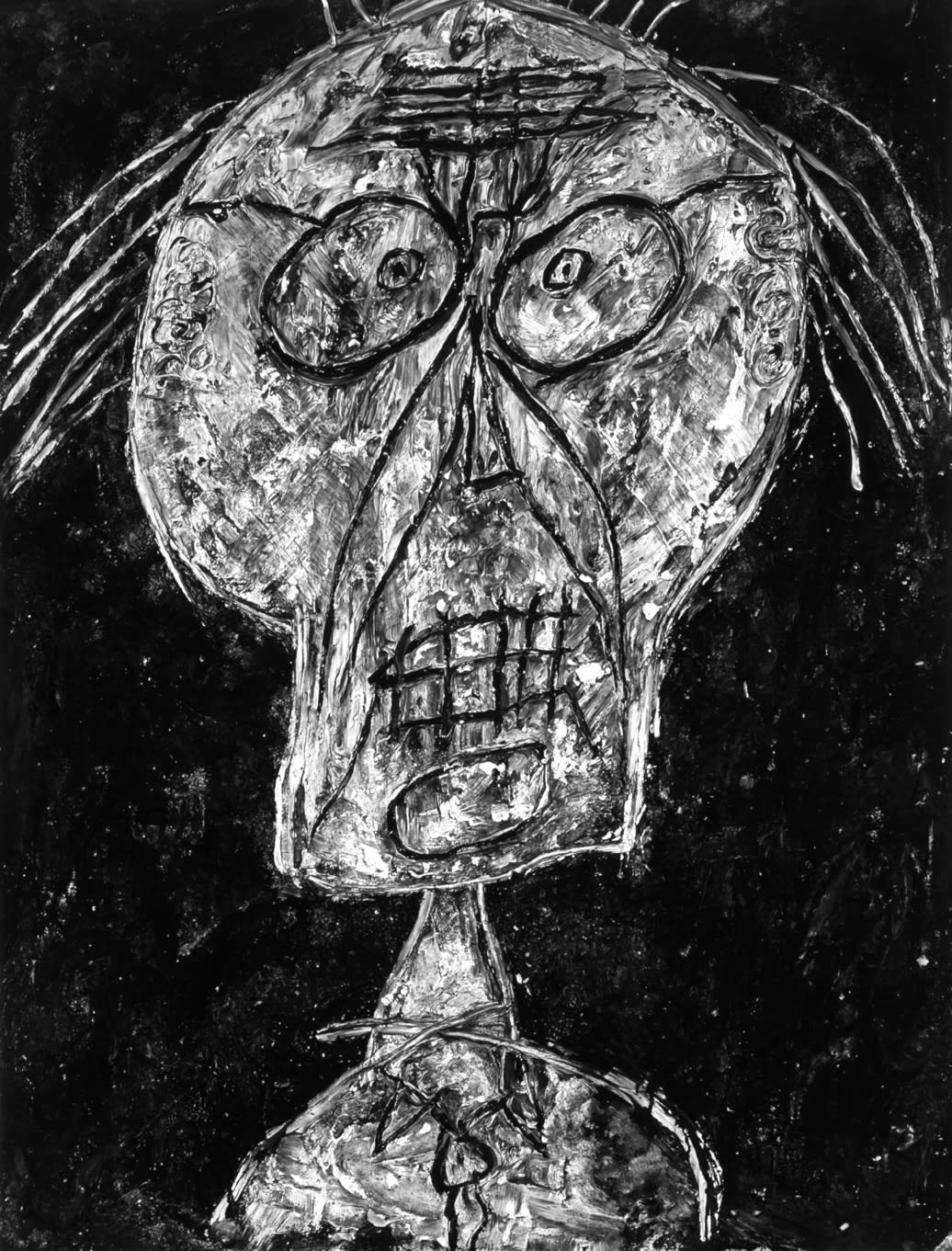
Longo’s charcoal drawing of Dubuffet’s portrait of the French writer André Dhôtel (1900—1991) recreates in minute detail the graffiti-like technique of the original. This was, according to Longo, one of the main points of departure for his exploration of the European avant-garde. Rather than turning to abstraction, Dubuffet subverted traditional figurative genres such as portraiture, channeling a more ‘raw’ form of art making he encountered in asylums and among school children. Through Dubuffet’s work, Longo engages with the radical potential of figuration to reflect on his own representational practice, finding a historical precedent to its revolutionary potential.
Untitled (After Dubuffet; Dhôtel nuancé d’abricot, 1947), 2022Charcoal on mounted paper
236.2 x 177.8 cm (92.99 x 70 in)


Longo is fascinated by Wols, whose radical technique of drips and splashes shocked those who first saw the paintings in 1947. One and a half bigger than the original, Longo’s meticulous rentition allows him to catch a glimpse of the painter’s way of thinking at the time of execution. As each uncontrolled drip becomes a measured and deliberate layering of charcoal, Longo gives new resonance to every one of the artist’s original brushstroke.
Untitled (After Wols; Vert cache rouge (Le Grand Orgasme), 1947), 2022Charcoal on mounted paper
221.6 x 177.8 cm (87.24 x 70 in)
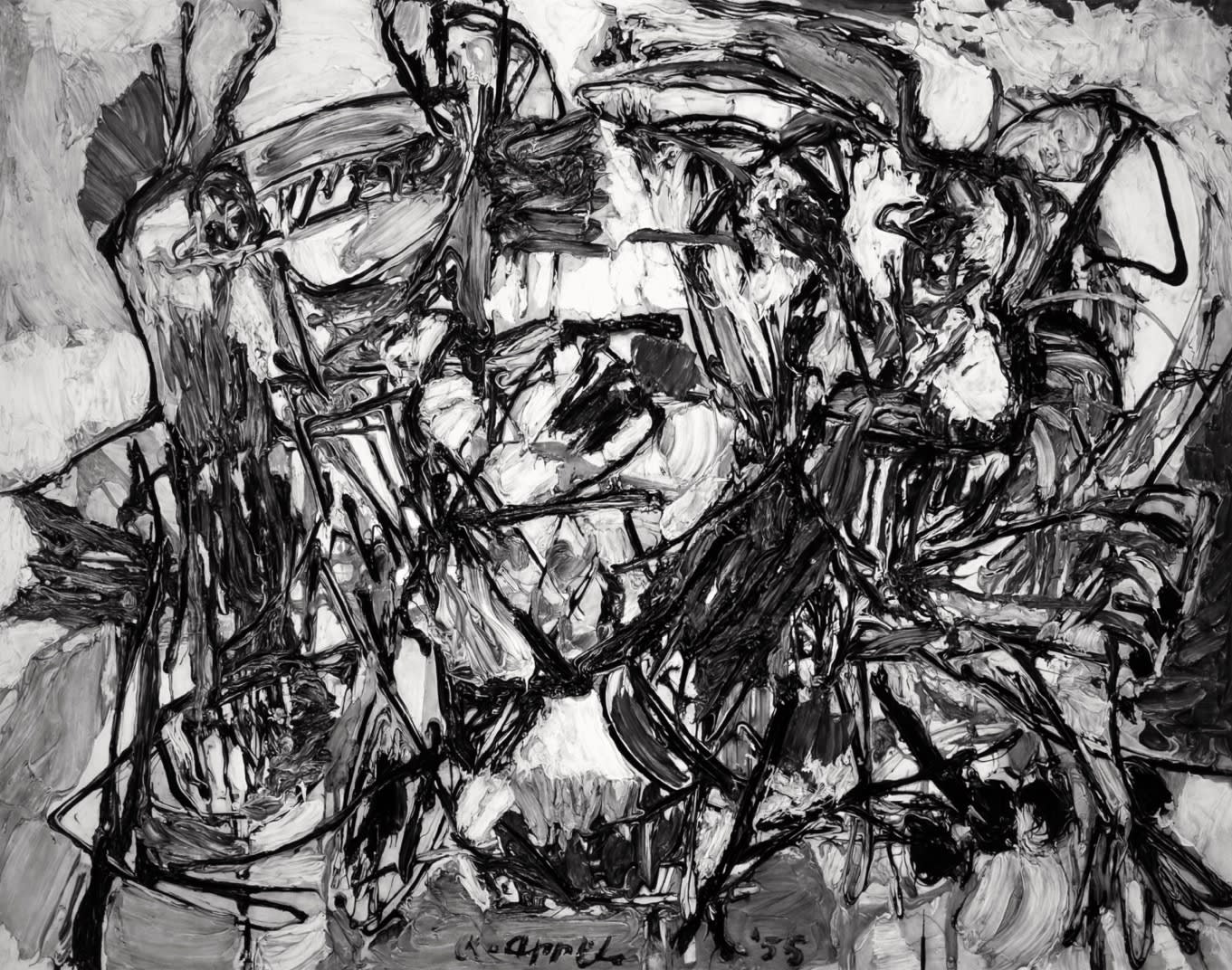
The dynamism of Karel Appel’s original painting contrasts powerfully with Longo’s measured and meticulous approach. Recreating the storm of colour and a whirls of paint in charcoal, the American artist slows down the time of making the image. As he studies and deconstructs each of Appel’s seemingly instinctive gestures, the subject of the work becomes the paint itself and its cathartic, almost frenzied application.
Untitled (After Appel; Amorous Dance, 1955), 2022Charcoal on mounted paper
177.8 x 228.6 cm (70 x 90 in)
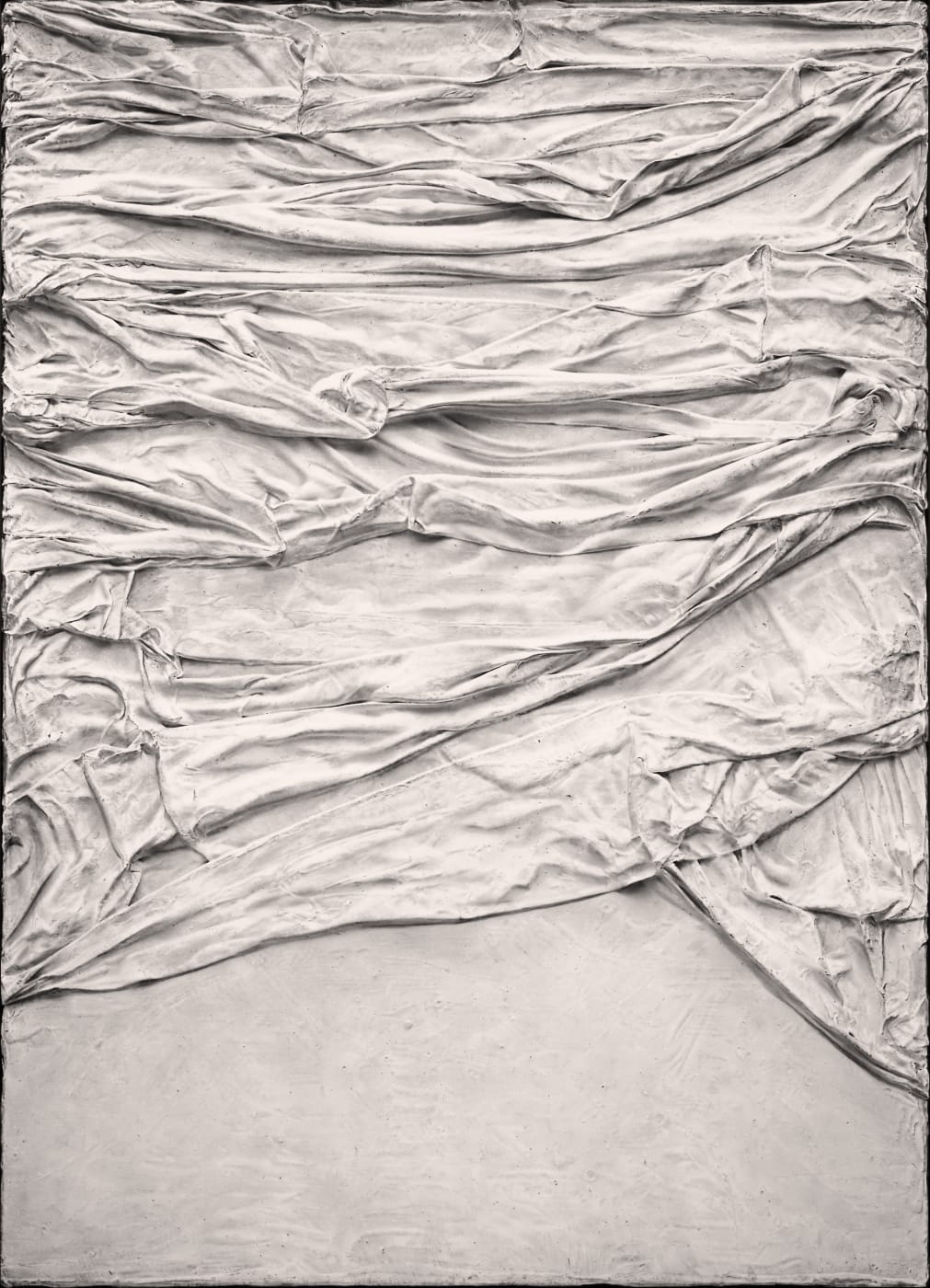
The Manzoni reminded me of Rauschenberg’s bed Combine, but in fact, Manzoni’s piece is only around 20 inches wide. So I made my Manzoni drawing the size of a bed. It looks like you could climb into it. — Robert Longo
Untitled (After Manzoni; Achrome, 1958–59), 2022Charcoal on mounted paper
228.6 x 165.1 cm (90 x 65 in)


This drawing of a work by the Danish artist Asger Jorn exemplifies the inversion required to transpose a painting into charcoal. As Longo explains, ‘in traditional painting, you work from dark to light. So although these guys are not painting traditionally, I'm deconstructing the process and trying to figure out how they made these things to begin with.’
Untitled (After Jorn; Letter to my Son, 1956–57), 2022Charcoal on mounted paper
Image 177.8 x 265.4 cm (70 x 104.49 in)
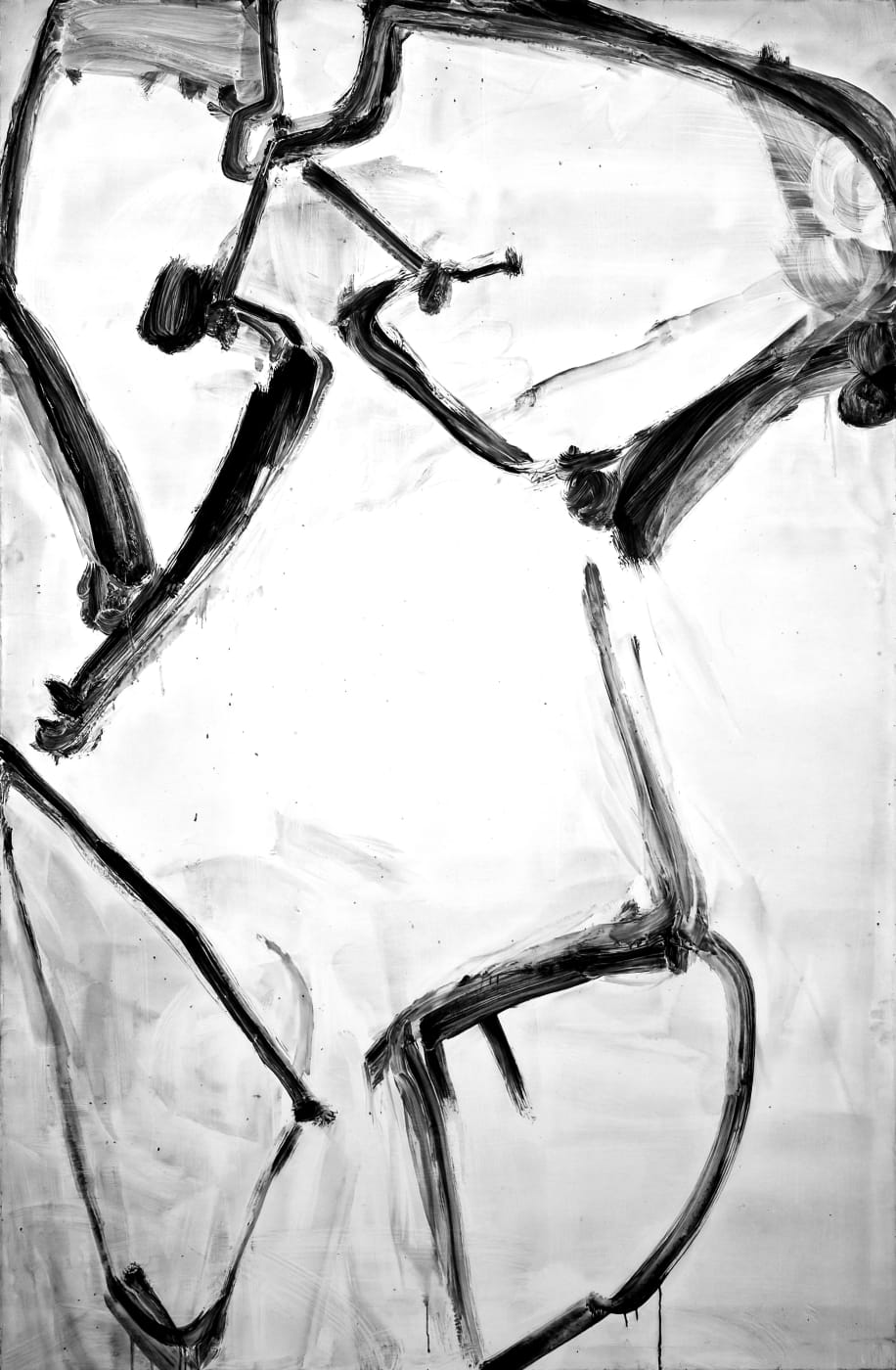
With the Maria Lassnig, it looks so simple, but it took so long to do because it’s all about the tonalities of the canvas. — Robert Longo
Untitled (After Lassnig; Figur mit blauem Hals, 1961), 2022Charcoal on mounted paper
Image 203.2 x 134 cm (80 x 52.76 in)
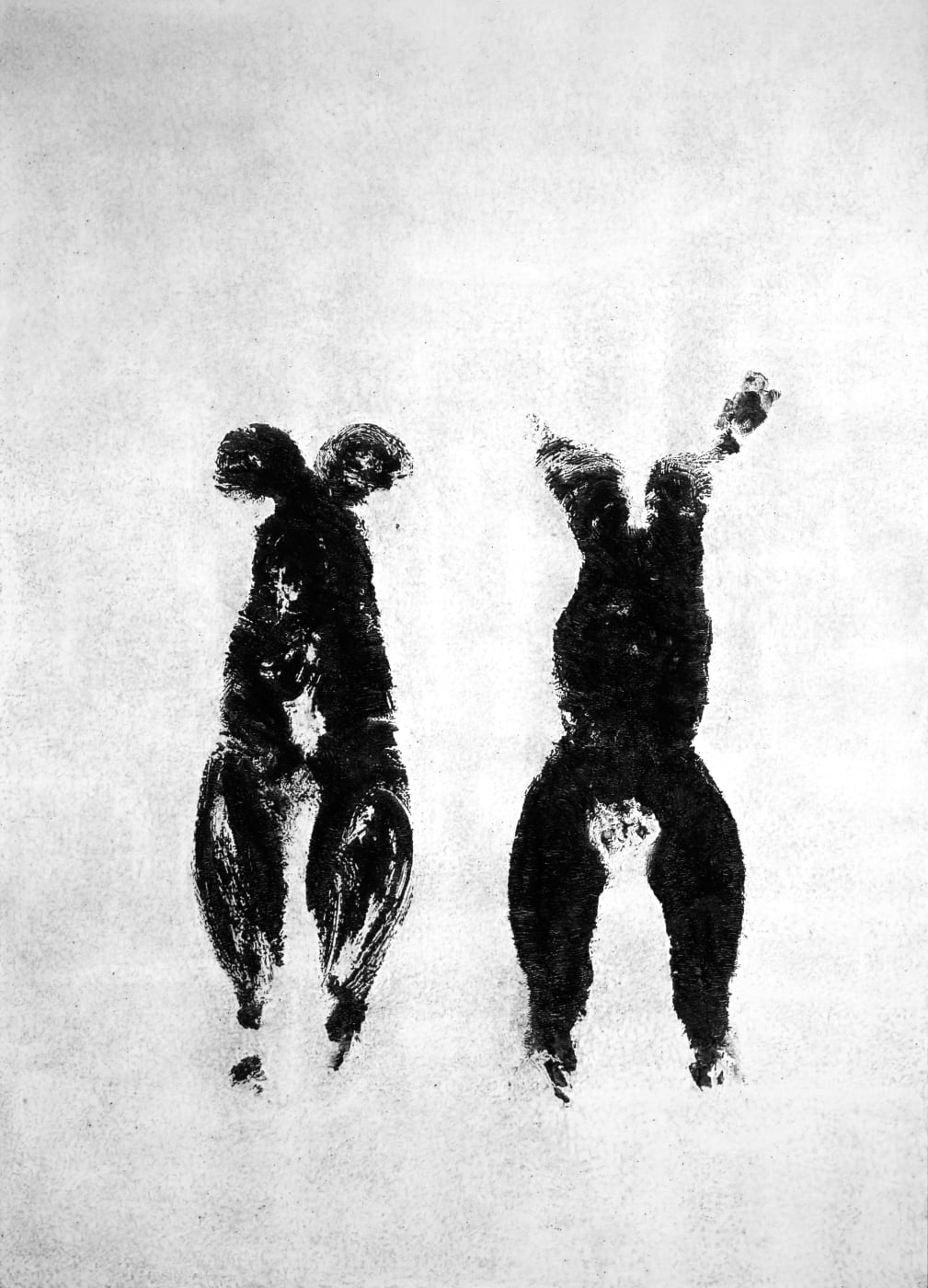
Whereas Klein’s Anthropométries were realised in a few minutes, often in front of an audience, Longo’s rendition is the product of several weeks of meticulous work. The vibrancy of the International Klein Blue is also missing from the drawing, replaced by deep black charcoal. With the action and colour taken away, it is the textured imprint of the models’ bodies that stands out in Longo’s version of Klein’s Anthropométrie, invoking new references and associations.
Untitled (After Klein; Anthropométrie sans titre (ANT 110, 1960)), 2022Charcoal on mounted paper
Image 228.6 x 165.1 cm (90 x 65 in)

Light was of primary importance for Zao, whose paintings have been described as ‘translucent’. The effect is heightened even further in Longo’s monochrome version his painting, where the brightest sections are in fact white paper laid bare, un-coated by any pigment. The luminescence of the work brings to mind Longo’s previous study of painting: a series in which he drew X-rays of famous masterpieces.
Untitled (After Zao Wou-Ki; Still Two of Us - 10.3.74, 1974), 2022Charcoal on mounted paper
172.6 x 243.8 cm (67.95 x 95.98 in)
